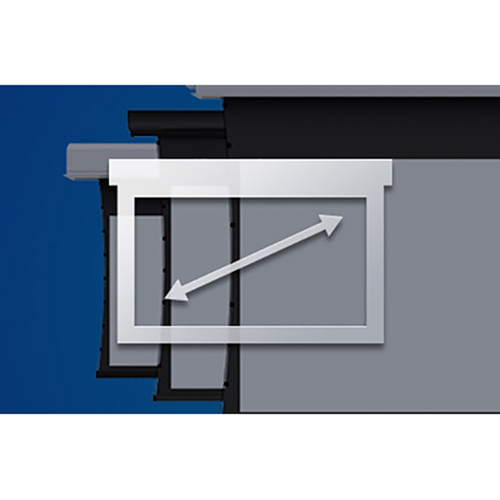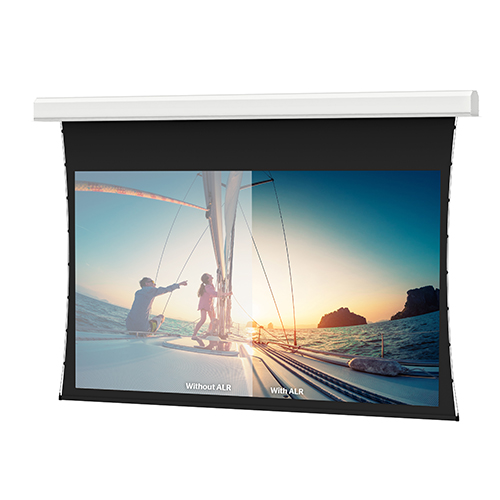Posted on 8/19/2019 by Da-Lite Team
The pace of technology shifts in the AV industry can be thrilling. They can also be daunting when systems are almost immediately obsolete, sometimes before the installer leaves building! Content created in High Dynamic Range (HDR), wider color gamuts (i.e. Rec.2020) and continuous improvements in laser projection create images approaching what the human eye truly sees in nature. As a growing number of discerning eyes crave a virtually pixel-free viewing experience, 4K Ultra HD resolution is giving way to 8K and now even talk of 16K.
This means display sizes are growing, and bigger sizes equal bigger price tags. The role of a well-matched projector and screen in this new age of AV can’t be underestimated. As pixel size shrinks to near invisibility, more detail is expressed in images. Pixel density of 4K images is 4x higher than 1080p resolution (aka Full HD). In order to achieve optimal image quality, especially as scale increases, high-resolution projectors and projection screens must be perfectly paired.
![]()
Images and font sizes shrink as pixel size decreases and resolution increases.
On the left is an example of 11 pt font at 1080p resolution on a 70”diagonal 16:9 projection screen.
On the right, 11 pt font at 4K resolution on the same screen when viewed from the same distance.
Projector Pairing
Upgrading only the projector results in lost value and poor image quality including color shifts, “hotspotting” and low resolution – the very opposite of why the latest and greatest laser projector was chosen. Older or low-cost projection screens have textured surfaces. This isn’t an issue for standard resolution projectors because pixels are big enough to cover the peaks and valleys caused by these textured surfaces. Now, the ultra-small pixels become degraded in these surfaces.
Illustration of Standard-resolution Screen Surfaces
![]()
This illustration shows how pixels of various resolutions are affected by textured projection screen surfaces.
Larger pixels are still distorted by the peaks and valleys of the surface; however, image quality is less affected due to the amount of surface area they cover.
Projection screens specifically designed for high-resolution projectors feature a smooth surface, free of those microscopic peaks and valleys. This ensures the tiny pixels of 4K, 8K and 16K resolution remain completely intact and visible to the viewer. Da-Lite HD Progressive surfaces provide an ideally smooth surface so even the tiny pixels of 16K resolution will remain visible, without sacrificing detail.
![]()
Projection screen surfaces that are outdated or for standard-resolution projection vs. Da-Lite high-resolution surfaces, ideal for 4K-16K projection.
Want to further expand your understanding of what 16K resolution means and why it’s important? Watch now to dive deeper with Da-Lite R&D engineers.
Technology-forward Installations
As we forge ahead towards an era of 8K and 16K resolution, there is a way to ensure you will remain satisfied with image quality for years to come. When choosing the latest and greatest high-resolution projector, the best way to guarantee return on investment is pairing it with a projection surface designed to enhance the image as much as the projector.
Not sure which premium Da-Lite screen surface is right for your high-resolution projector? Check out our Screen & Surface Selection Tools. They provide guidance on selecting the right screen for projector resolution, brightness, room size, application and more.
![]()
Use our Screen Surface Technology chart, Question Tree and Product Selection Workbooks online to determine the right screen surface for your next installation.
Follow and like us on social media to read our next blog, and learn more about shifting color, controlling brightness and why tension is a very good thing for projection screens.

 All News
All News
